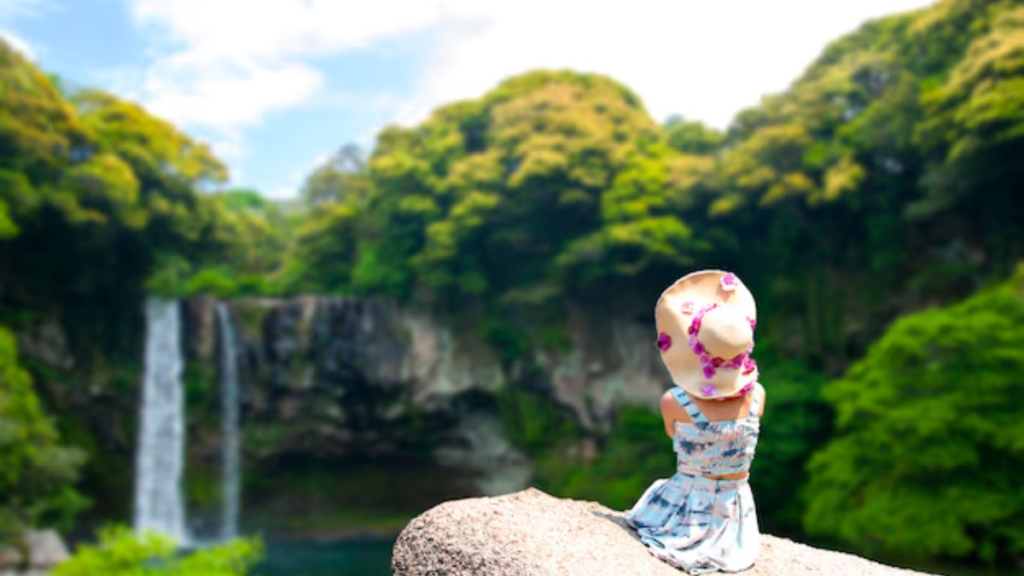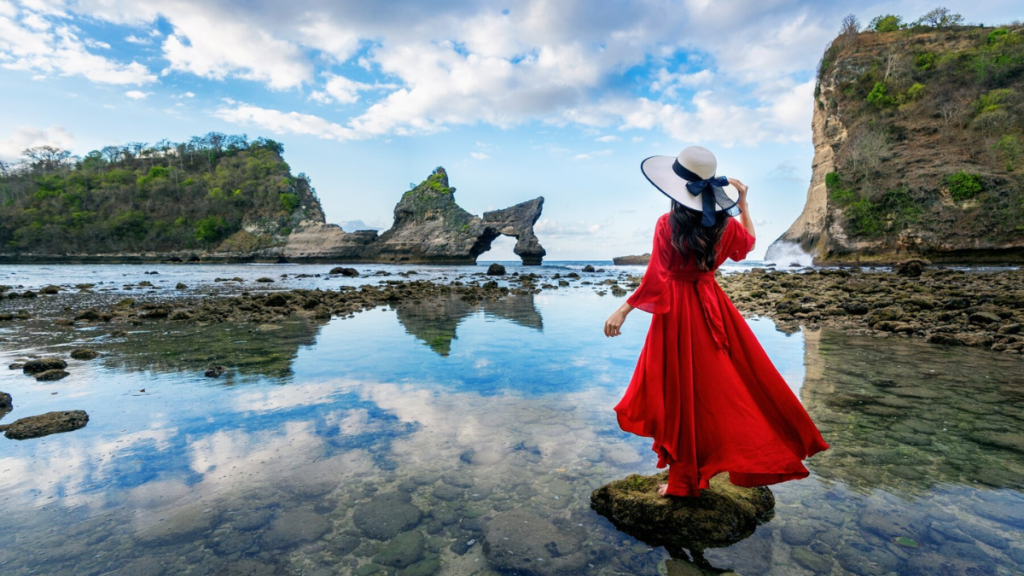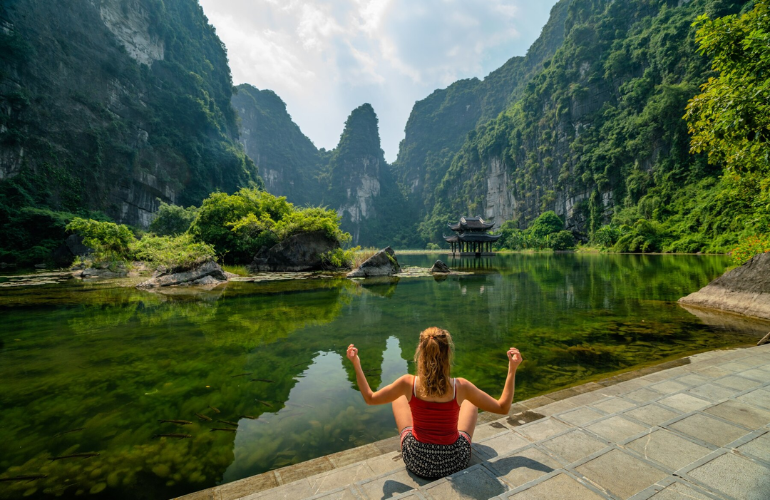Vietnam is a captivating country with diverse landscapes, rich culture, and a variety of weather patterns that vary across its regions. If you’re planning a trip, understanding the best time to go to Vietnam is crucial for making the most of your visit. From the bustling streets of Hanoi to the serene beaches of Phu Quoc, Vietnam offers something for every traveler. However, the timing of your visit can greatly influence your experience. In this article, we’ll explore the ideal times to visit Vietnam based on weather, festivals, and travel preferences.
Understanding Vietnam’s Climate Zones
Northern Vietnam – Hanoi, Halong Bay, and Sapa
Northern Vietnam experiences four distinct seasons: spring, summer, autumn, and winter. This region is known for its cooler winter months, especially in the mountainous areas like Sapa, where temperatures can drop to freezing. The summers are hot and humid, with temperatures reaching their peak between June and August. For those looking to explore the stunning landscapes of Halong Bay or the cultural treasures of Hanoi, the best time to visit to Vietnam is during the spring (March to April) or autumn (September to November) when the weather is pleasant and more temperate.
Must read:What Travels Faster: Emptiness or Fullness? Explore the Truth
Central Vietnam – Hue, Da Nang, and Hoi An
Central Vietnam has its own unique weather patterns, heavily influenced by the monsoon season. The region sees dry, sunny weather from January to August, making it an excellent time to visit the historic cities of Hue and Hoi An or relax on the beaches of Da Nang. However, the wet season hits from September to December, often bringing heavy rains and potential flooding. Therefore, the best time to go to Vietnam if you’re heading to this region is from February to May when the weather is warm but not overly hot, and the skies are clear.

Southern Vietnam – Ho Chi Minh City and the Mekong Delta
Southern Vietnam enjoys a tropical climate with two primary seasons: the dry season (November to April) and the wet season (May to October). The dry season is considered the most comfortable for travelers, with warm temperatures and minimal rain. Ho Chi Minh City, formerly known as Saigon, and the lush Mekong Delta are vibrant and full of life during this time. If you’re seeking a sunny escape, the dry season is undoubtedly the best time to go to Vietnam and explore the wonders of the south.
Seasonal Breakdown: Best Time to Visit Vietnam
Spring (March to April)
Spring is widely regarded as one of the best times to go to Vietnam. During these months, the weather is warm but not too hot, and there is little rain, making it perfect for sightseeing. In Northern Vietnam, cherry blossoms begin to bloom, adding an extra layer of beauty to the region. Central Vietnam also enjoys favorable weather, with moderate temperatures that are ideal for exploring the ancient town of Hoi An or relaxing on the beaches in Da Nang.
Summer (May to August)
Vietnam’s summer months can be hot and humid, especially in the northern and southern regions. However, summer is the perfect time for beach lovers who are heading to Central Vietnam. This is when Da Nang, Nha Trang, and Phu Quoc Island come alive with sun-seeking tourists. Although Central Vietnam remains relatively dry, northern and southern areas experience frequent rains during the summer, making it less ideal for trekking or sightseeing. If you’re planning a beach vacation, though, this can still be the best time to go to Vietnam.
Autumn (September to November)
Autumn is another excellent season to visit Vietnam. In the north, the heat of summer gives way to cooler, more comfortable temperatures. The rains begin to ease in both the north and south, making this a great time for trekking in Sapa or taking a cruise around Halong Bay. Central Vietnam, however, enters its rainy season in the autumn, so it’s best to avoid cities like Hue or Hoi An during this period. Nevertheless, for cultural and historical exploration in the north, autumn can be the best time to go to Vietnam.
Winter (December to February)
Winter is a great time to visit Southern Vietnam, as it is the dry season and the weather is pleasantly warm. Ho Chi Minh City is full of energy during this time, and the Mekong Delta is lush and vibrant. Northern Vietnam can get chilly, especially in mountainous areas like Sapa, where temperatures can drop to near freezing. However, this is also the time to experience Vietnam’s cultural festivals, such as Tet (Vietnamese Lunar New Year), which often falls between January and February. For a mix of pleasant weather and cultural experiences, winter is considered one of the best times to visit Vietnam.
Special Events and Festivals in Vietnam
Tet – Vietnamese Lunar New Year (January/February)
Tet, or the Vietnamese Lunar New Year, is the most important and widely celebrated festival in Vietnam. It usually takes place in late January or early February, depending on the lunar calendar. While many businesses close during this time, Tet is a fantastic opportunity to experience Vietnamese culture up close. Traditional ceremonies, parades, and family gatherings are common, and the streets are beautifully decorated with red and gold. If you want to experience Vietnam at its most festive, this is the best time to go to Vietnam.

Mid-Autumn Festival (September/October)
The Mid-Autumn Festival, also known as the Full Moon Festival, is another important celebration in Vietnam, particularly for families and children. Taking place in September or October, this festival is marked by colorful lanterns, mooncakes, and lively street performances. Hanoi and Ho Chi Minh City are especially festive during this time. The Mid-Autumn Festival is a great time to visit Vietnam if you want to experience its vibrant cultural life.
Best Time for Outdoor Activities
Trekking in Sapa
For those looking to explore the mountainous regions of Northern Vietnam, the best time to visit Vietnam is during the autumn months of September to November. The weather is cool and pleasant, making it ideal for trekking through the terraced rice fields of Sapa. Winter months can be quite cold, while summer brings heavy rains, making the trails more challenging.
Halong Bay Cruises
Halong Bay, one of Vietnam’s most famous natural wonders, is best visited during the spring (March to April) or autumn (September to November). These months offer clear skies, calm seas, and moderate temperatures, perfect for a relaxing cruise around the bay’s limestone islands. Summer can be hot and stormy, while winter tends to be foggy, which might obscure the stunning views.
Beach Holidays
For beach lovers, the best time to visit Vietnam is from May to August, particularly if you plan to visit Central Vietnam’s beautiful beaches. Phu Quoc Island, Nha Trang, and Da Nang are at their best during this time, with clear skies and warm waters. However, if you’re visiting Southern Vietnam’s beaches, such as Phu Quoc, November to April is also a good time to enjoy the sun without the rainy season interruptions.
Traveling Tips for Vietnam
Pack Accordingly
Vietnam’s diverse climate means that packing for your trip can be tricky. If you’re traveling between regions, be sure to pack for both warm and cool weather. Light, breathable clothing is essential for the hotter months, while a warm jacket is necessary for the cooler north during the winter.

Plan for the Rainy Season
If you happen to visit during the rainy season (May to October in the south and September to December in the central regions), be prepared for sudden downpours. Bringing a raincoat or umbrella is a good idea, and be aware that outdoor activities may be limited during this time.
Conclusion: When Is the Best Time to Go to Vietnam?
The best time to go to Vietnam depends largely on what you want to experience. For those looking for comfortable weather and minimal rain, spring (March to April) and autumn (September to November) are ideal for exploring the north and central regions. Beach lovers may prefer the summer months (May to August) for sun-soaked days in Central Vietnam, while the dry season from November to April is perfect for visiting Southern Vietnam. Regardless of when you choose to go, Vietnam offers a wealth of experiences, from cultural festivals to stunning natural landscapes, making it a year-round destination for travelers.
For more information click here
What is the best time to visit Vietnam for good weather?
The best time to visit Vietnam for good weather is during the spring (March to April) and autumn (September to November).
Is summer a good time to visit Vietnam?
Summer is ideal for beach destinations in Central Vietnam, but it can be hot and humid in the north and south.
What should I pack when traveling to Vietnam?
Depending on the season and region, pack light, breathable clothing for hot weather, and a warm jacket if visiting Northern Vietnam in winter.
Are there any festivals I should experience in Vietnam?
Tet (Lunar New Year) in January/February and the Mid-Autumn Festival in September/October are two of the most important cultural celebrations in Vietnam.When is the rainy season in Vietnam?
The rainy season occurs from May to October in Southern Vietnam and from September to December in Central Vietnam.
